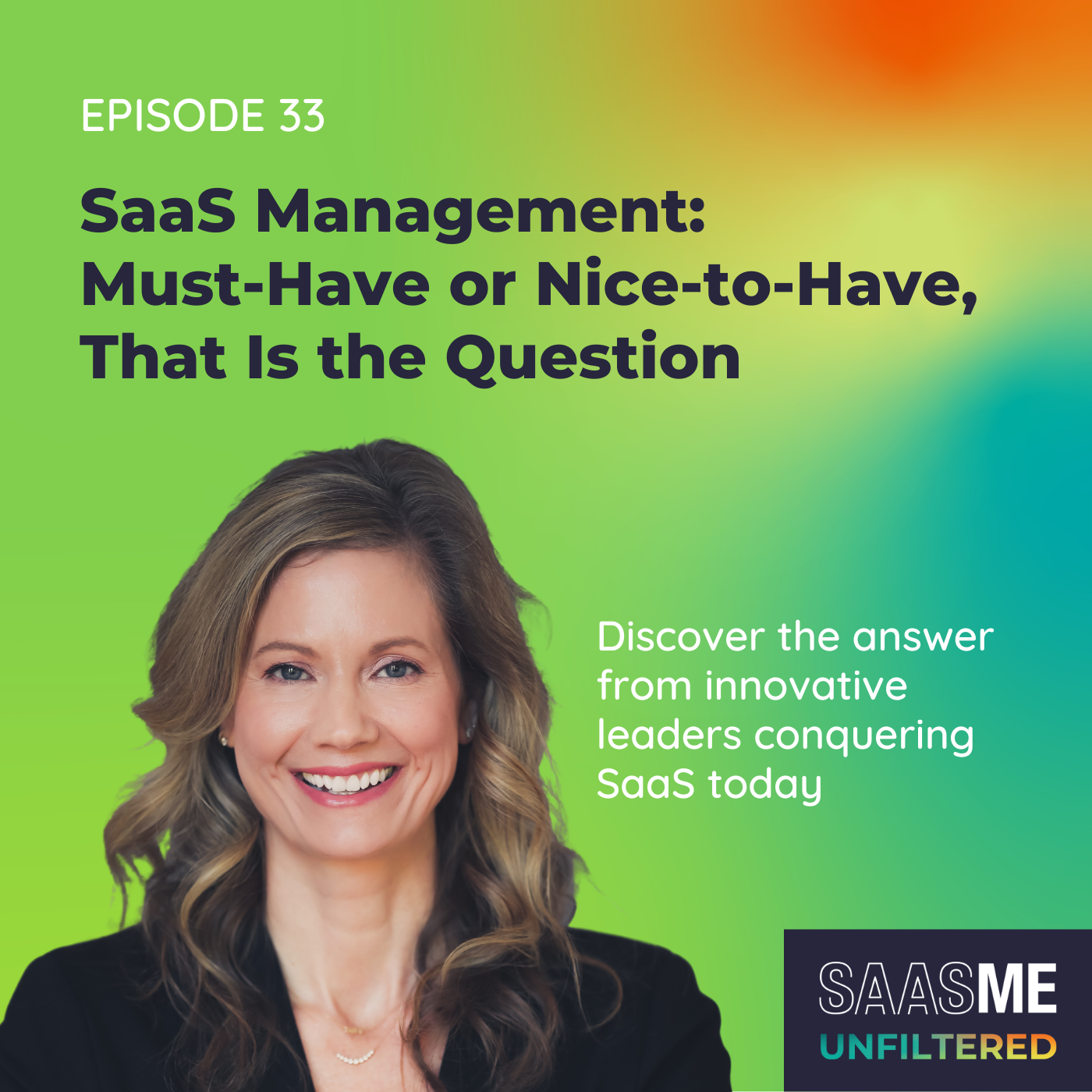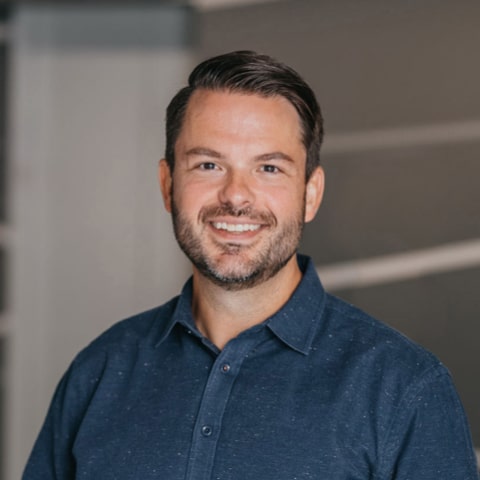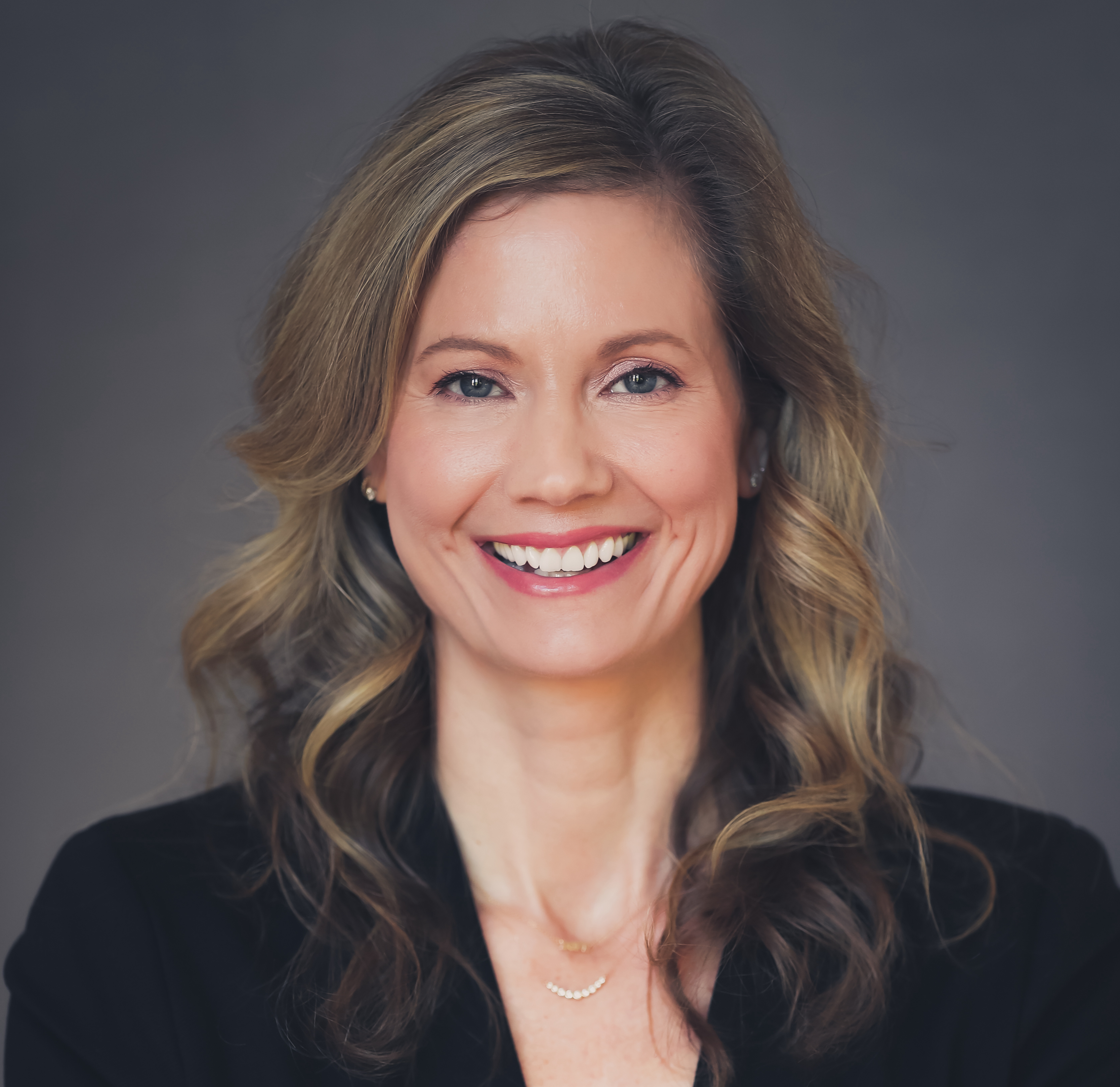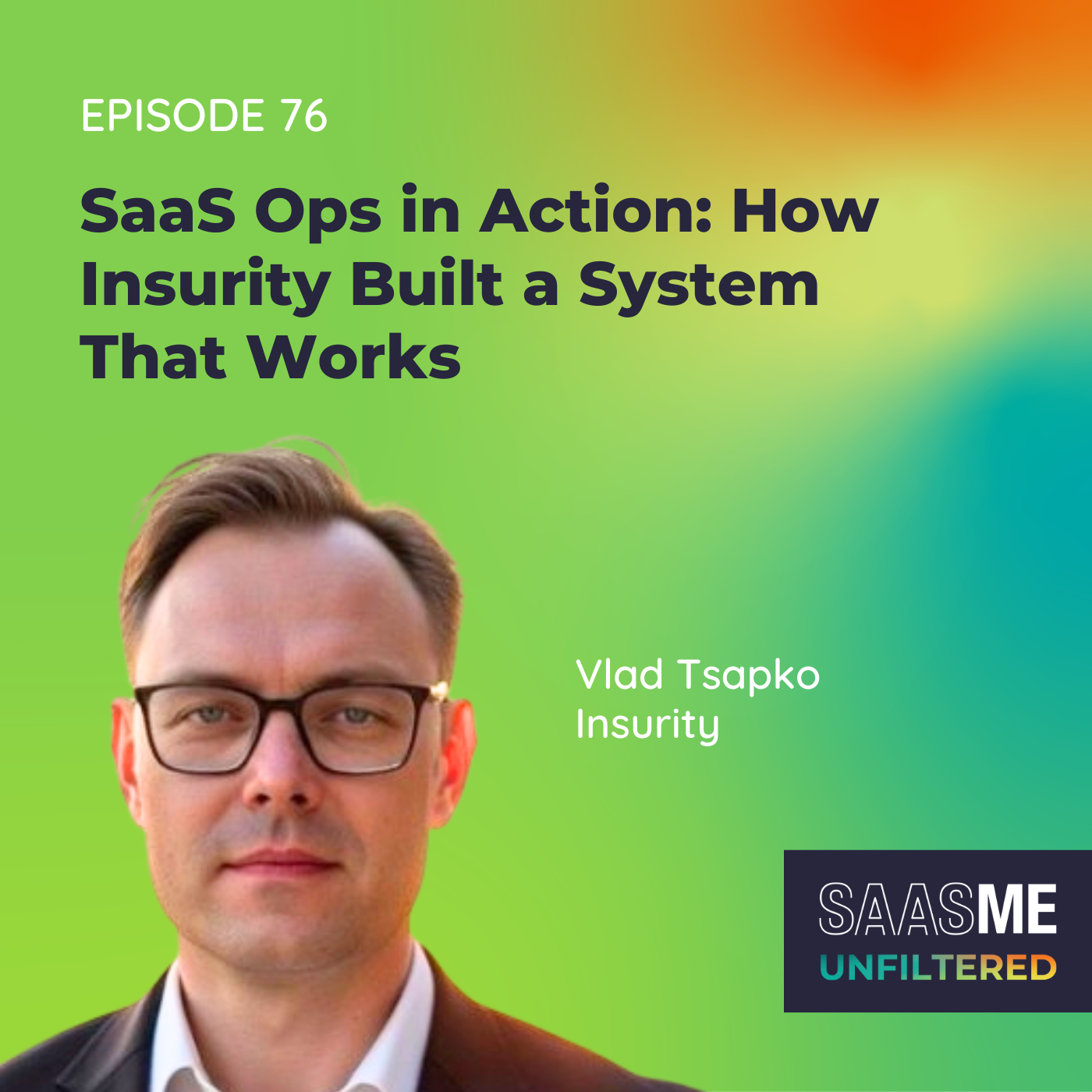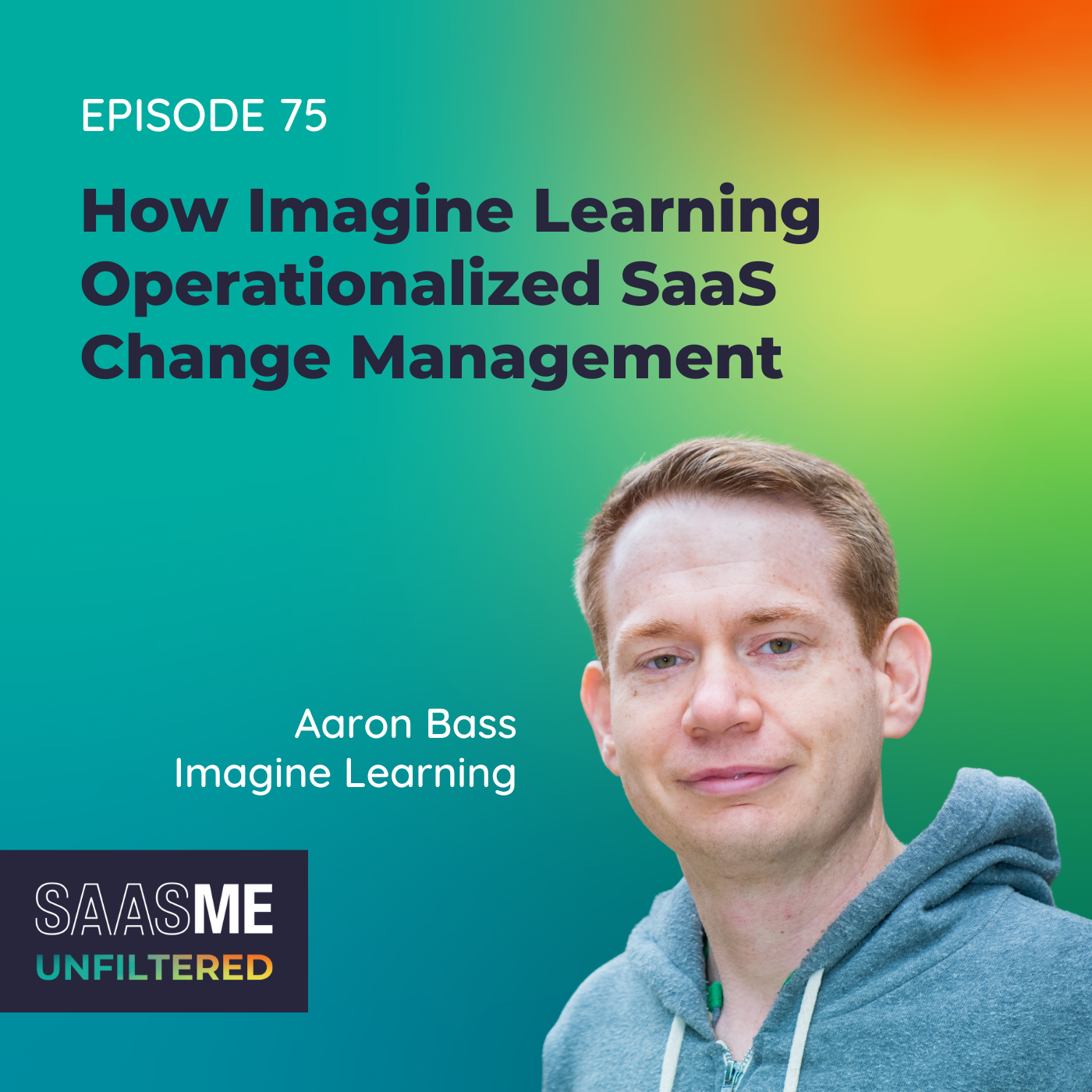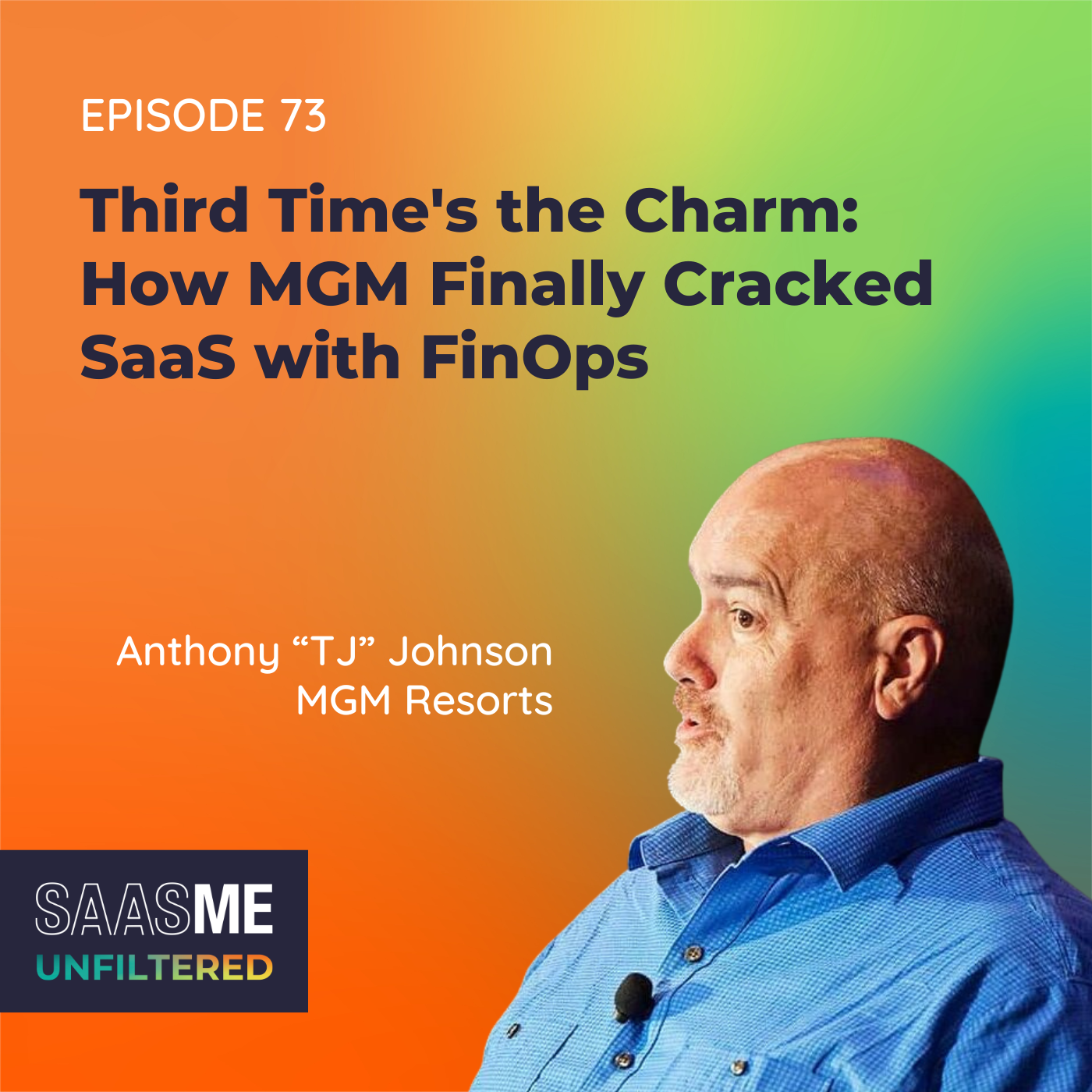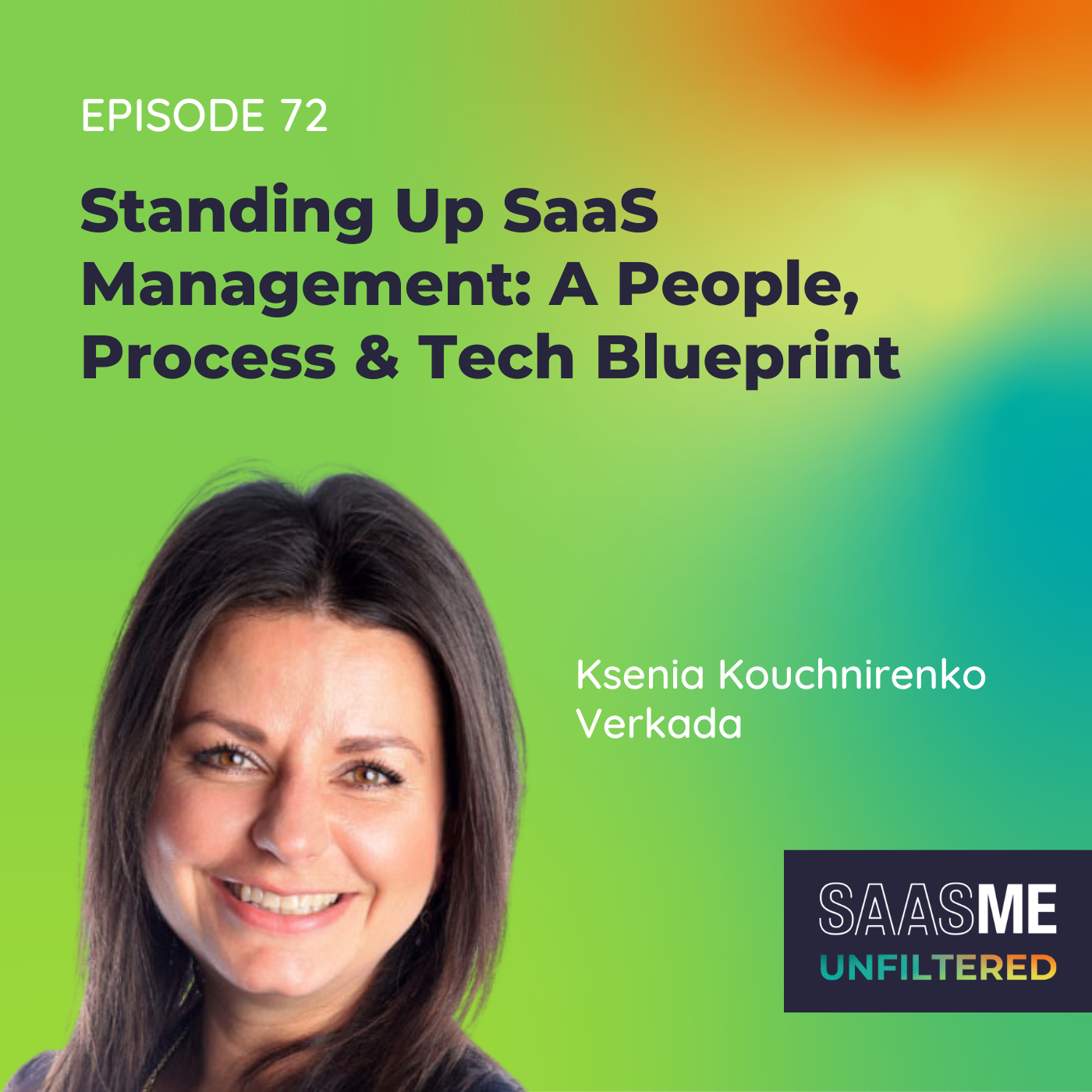SaaS Management: Must-Have or Nice-to-Have, That Is the Question
- 0.5
- 1
- 1.25
- 1.5
- 1.75
- 2
Cory Wheeler: Hello, hello, and welcome to SaaSMe Unfiltered, the SaaS management podcast, the show with give- it- to- you- straight, real- life advice from pros knee-deep in SaaS every single day; SaaS management superheroes just like you.
Meredith Albertson: Hi, everyone. Welcome to another episode of SaaSMe Unfiltered. I'm Meredith Albertson, Chief Marketing Officer at Zylo. When we started the show last spring, we set out to capture the inspiring stories of people taking back control of their SaaS portfolio and spend, mitigating risk, and driving innovation and efficiency at their organizations. It's been more than we ever expected, and I hope that hearing from these IT, software asset management and procurement leaders has been helpful to you as you navigate your own SaaS management journey. For today's episode, we've pulled together some of our favorite SaaSMe Unfiltered moments, with thoughts from past guests on why managing SaaS is so hard, making the business case for SaaS management, establishing SaaS management as an ongoing program, and why a tool is mission- critical to your success. All right, let's get started. We hear time and again from companies managing their SaaS applications in a spreadsheet. Sure, it's a way to start. But if you are using one today, you know it's only as accurate as the data you put in. And let's face it, it's often out of date. This was exactly the case for Karen Hodson and her procurement team at Marigold. They were using a spreadsheet to keep track of their renewals, but the challenge was that it lacked critical data they needed to make informed decisions. All that changed when they began using a SaaS management platform.
Karen Hodson: I think that the answer anybody would probably give is that it's called spreadsheets, spreadsheets, spreadsheets. We all try to capture everything we can within a spreadsheet. Part of it is saying, "Hey, finance team, who we paid money to." Which is great, except for the $0 ones. That doesn't help me capture those ones. So then, it's also, "Hey, IT team, what tools are you aware of, and are there any connected to Okta? Or what do you guys have knowledge about?" Just really trying to piecemeal together all of the understanding of purchases across the organization. And then looking at those and going, "Well, is that a SaaS tool, or is that some other kind of tool?" So then, we also have to distinguish, is it a SaaS tool? And figure that piece out. It's a lot of pulling information together, big spreadsheet and trying to add information and figure out what's going on and who owns it in the company, so that we can get some background. The challenge is, inevitably, the moment you create those spreadsheets, they become outdated. It's always trying to update and keep them current is a challenge. And then when we do a lot of M&A activity, then that just blows up every spreadsheet that you have. Because now, you have this whole new bucket coming in. Yeah. Outdated spreadsheets is pretty much the only way we could figure out how to get our head around what was going on with our SaaS spend, so we very quickly, were trying to find a tool out there to help us do that. People can come to us and we can be reactive. "Oh, I want to buy this," or, " Hey, I want to renew this." Okay. Cool. Let me look into it. We'll go from there. But it's very narrowed-focus. You're looking at that one request that's coming from whatever department. You're not looking at holistically in the organization. Well, what if we are already buying that tool, or we're buying a similar tool? Or hey, has somebody else asked for something like this that we could bring everyone together? What if we historically paid for this kind of tool? Maybe we've had one, got rid of it. Why did we get rid of it? Things like that. It's very narrow-focused if you don't have that visibility from an organizational standpoint. Of course, you can always handle one-off requests and deal with the things in the moment and renewals, but you're only able to deal with that very narrowed bit of information. Having a tool gives you that holistic view of comparison of, well, are you already spending money on the same, similar type tool? If so, how much are you spending? Who's the owner of that? Let's take a look and do a deeper dive there. And then also, benchmarking information when you're trying to expand.
Meredith Albertson: Having the right data, in Karen's case, made it possible to know whether an application should be renewed, as well as how to get the best deal with their vendors. This data- driven approach is not limited to procurement. Let's look at another example from the IT asset management perspective. We spoke with Lindsay Stokes, the ITAM leader at Netflix, on why data is important to her and her team. Before kicking off Netflix's SaaS management journey, Lindsay and her team didn't understand the full scale of their SaaS problem. This lack of visibility was, in part, due to the company's governance approach, where employees can get whatever tool they need to do their jobs. Here's Lindsay on that approach and why visibility is key for SaaS management.
Lindsay Stokes: There's actually been a couple of those moments, and to my benefit, actually one of those happened before I joined, which is the reason I'm here. That's exciting. But yeah, when I joined, I felt like when you come in and you take that time to really just listen to current state, I took the time to really understand the business and what was happening and the process that was in place. Honestly, that moment for me was just shortly after our learning and talking to a lot of the stakeholders in this whole process. There's really hardly any data. There's disparate tracking, a lack of resources, and no standard process across the board. At Netflix we, also just for more context, have what's called freedom and responsibility. A user can have the tools that they need to do their job, but the expectation is that we all do this responsibly. With Netflix's mission to entertain the world, we don't like the idea of putting guardrails, preventing any employees from creating great content because they don't have the software they need to do their job. You can imagine with this model, the SaaS sprawl. Me, in my experience, I just knew it was going to be quite large. I think that everybody at Netflix, maybe just because that data wasn't visible, they weren't entirely sure how big, and I think that folks assumed that the responsibility part was happening on a regular basis. But as we in the industry know, that's not always the case, and sometimes in understanding what their responsibility is because what you don't know, you don't know. There's a lot involved with bringing new tools into the environment. Yeah. That moment, basically, I knew we needed visibility first. How could we make informed decisions about what's best for Netflix without data to tell the story?
Meredith Albertson: It's not always easy to admit you have a problem. I love how Lindsay and her team came to realize the starting point for managing SaaS is knowing what you have. We have had quite a few guests on the show that have shared their own versions of this story when they realized they needed SaaS management. Now, if you've listened before, you know we like to call these" Oh, shit" moments, and there's one that's by far my favorite. Our friend, Jason Owens, an enterprise Sam ITAM program owner at Salesforce, discovered something surprising and quite costly that would even get the coolest of cats' temperature rising.
Jason Owens: The one really big "Oh, crap" moment for us happened in my first year when we got to a renewal event for a audio and visual editing platform. We didn't have really good controls. We didn't have discovery, both either on-prem or in the SaaS space at all. We were very reactive to audits and renewals and really any kind of vendor outreach. We weren't doing great vendor management. We're just handing out licenses to a lot of different platforms like you show up at a baseball game and they're handing out whatever, the little mini helmet of the night. Just like, "First 5, 000 people get it." You get in the door, you get it. We get to a renewal event, and it turns out that this audio, visual, and editing software platform had been picked up in our sales org. After we did some digging, we found out all several 100 folks who had gone through the manager-approval process, gotten the approvals, were using it to edit cat pictures and cat videos of what is really expensive business software. We had a significant overage, and Joe and I had to go talk to the VP levels and the CIO at the time for the PR approval and say, "Hey, look, here's the governance." This is in my first three months in the role when we get to this room, and so I'm thinking, "Oh, geez, we're having a mid-six figures overage plus a million plus and forward-looking through up, and we're in trouble. I'm in trouble. " It's one of those things where you're like, "Oh, geez, am I going to have a job?" It's just, lizard brain goes like, "Oh crap, I'm not going to have a job." We were able to actually steer the conversation and say, "Hey, look, this is where if we have a discovery platform, if we implement governance, we can, one, avoid these things, but also unlock that money that we would have to spend on that for investment in transformative business process and platforms." We've done that. It's a testament to everybody on the team, that we've been able to unlock so much value. As a program, we pay for ourselves. And it's one of the metrics I track, is making sure that not just that we're cost-neutral from a fully loaded salary perspective, but that we're actually returning significant value. Over the last four years, it's basically run six-and-a-half to seven times the cost of our discovery tools plus our FTE dollars that we return in value through cost avoidance and cost savings versus budget to the business, which is fantastic. It's one of those things, I think if we could get the story out to more people about how transformative software asset management, particularly in the SaaS space, where people are just out swiping credit cards and agreeing to click-through terms, that more people would say, "Oh, we really need to invest in this for our business." Because we can leverage that money and then unlock value and put it into things that are transformative for the business, rather than just spend.
Meredith Albertson: I'm not sure about you, but Jason's" Oh, shit" moment sure made me laugh. Hopefully, those cat videos helped them close a deal or two. But in all seriousness, I think his story is a great depiction of how SaaS can get out of hand, and right under your nose. When you don't have one place to store all that information, a central source of truth, you can't uncover the troubled spots and find areas for improvement. For Chris Asing, head of IT at Redis, using a SaaS management platform has been critical to achieving ongoing visibility and optimization.
Chris Asing: There's two pieces which help us. One is, you have to have the data. And then there's trying to make intelligent, or at least, hopefully, sensible conclusions about that data and making those connections. Starting with that is key. I think prior to having a SaaS platform to understand what it is we are consuming, or I should say this, what it is we bought and then what it's we're using are two very different things. How do you know what that is? How do you know what that is in an efficient way? This was one of the biggest struggles that, I think, myself and my peers, we used to deal with all the time. Whether you're using Zylo or any other sort of SaaS management platform, the way you do that is you'd actually go and work with finance to do an export and understand what the company's buying and hopefully, have enough insight into that data to draw some conclusions. What you'll typically get out of these exports are some combinations of vendors, products, and SKUs. You have to try and make sense of what it is you bought and what it is you're using. What it is you bought, you may not be able to make all the connections with, so you don't understand it. Is this duplicative? Is it not? Are we using it? Are we not? Is it old data? Just having that as your problem statement. How do you go and fix that? Well, you comb through exports of Excel files. What I would challenge that with is that everyone will need to do that for the rest of time. As long as we have companies, we will have to manage what it is we buy, whether that's a piece of hardware, a piece of software or an entitlement, whatever that is. I think in the case of Zylo, at least for us, it's been having that data, drawing on conclusions and categorizations and insights that the platform has provided with us, and then on our own terms, and sometimes I wish it was faster, on our own terms, figuring out what's important for us. Are we trying to just get the data correct? Because that was the first step. Do we have all the contracts in? Are they relevant still? Are they still in the period of term? And then we can look at, are they duplicative? Are we looking at everything, or are we just looking at things above a certain dollar threshold? Just trying to figure out, what are your business objectives, and use that data to assist you. And really commit to using a system, not many systems. By us doing that, I think we've been able to really understand our portfolio. We know what we have right now. We know where we're duplicative.
Meredith Albertson: The thing that stands out to me is that yes, visibility is so important. But if you don't have a place to centralize your SaaS inventory and leverage it as your source of truth, visibility will continue to be a problem. While the stories we've shared so far are from enterprise organizations, SaaS is a challenge for companies of all sizes. Next, we'll share some thoughts from David Stoicescu, the Chief Information and Security Officer at Deepwatch, on why starting a SaaS management program early can give you a headstart.
Cory Wheeler: We had the good fortune of starting to work together about five years ago when you really first started to get into looking at software, how that affects your organization, where the security risks are. We love to ask all of our guests, did you have an "Oh, shit" moment internally where something was on fire, a problem happened in any of your previous stops that led you to, "I need to get my arms around this and figure out what we're doing in a real strategic way"?
David Stoicescu: Not necessarily, Cory, under my purview, but what I will say, I've seen those "Oh, shit" moments happen with customers, or with people that are in my circles. I think whenever I see something like that happen, I try to learn from that experience myself. Even if something happens in the news, or some article comes out, then I'm like, "Wow, how would I have handled that situation?" I've seen plenty of scenarios where someone acquires some sort of application, and I think it happens in all types of organizations, but it really gets out of hand in the enterprise space because you've got thousands and thousands of employees. I remember, Cory, when Zylo was probably no more than 15 employees or something, back in the day. I was thinking about, as I was building the program, because the company that I was at before, I think we were no more than 30 employees at the time. I was already starting to think at the back of my mind, how do we make sure that we don't run into that problem several years from now? Because it's not that difficult to manage the mischief at a small scale when you know all the employees by name. That's how I approached the problem. I wanted to develop that relationship early, and I wanted to build that muscle early within the organization. And make sure that we had the various organizational leaders aware of the applications and the spend. And that if there was something unauthorized, whether it be marketing or sales, that they had visibility into that and they can do something about it. That's how I started to think about it.
Meredith Albertson: I think David's experience, building a SaaS management program at businesses at different maturity levels, is a fantastic example of how you can manage SaaS at any company. It really is never too early to get started. Okay. Now, we've had some great perspectives from IT, SAM, procurement, and security on the challenges of SaaS and why managing it is important. But what about finance and our friends in the CFO seat? We're seeing more and more the role of the CFO becoming a trusted advisor across the organization. They are driving alignment across the company, empowering their IT peers, and driving impactful change. With operating expense reduction being a key initiative for many companies, having your CFO on board can make or break your program. According to Russell Lester, CFO at Versapay, finance can be positioned as a hero with SaaS management. He's done this three times throughout his career and has a great perspective on the opportunity at hand for finance leaders.
Russell Lester: What's the role of the CFO? It is to maximize the runway for the business, is to reduce risk, is to unlock potential for a company. It's to empower your peers. It's to help the CEO see around the corner. It is to maintain that integrity of the financials and of the information that it can be trusted, that it's timely and accurate. What you have are companies that are working to grow exponentially and achieve high growth, hiring lots of people, joining companies with all these new tools they want to use, dry powder, deploying funds, getting approval to invest, spinning up all these tools. Tenure is different now. People don't stay as long at companies, simply because sometimes they see opportunities elsewhere or the market dictates. You've got this massive wave of all these new tools. And APIs, the ability for tools to connect one to another, also means, well, you don't need to buy one tool, one singular tool to do everything. You can stand up the best- of- breed and all these different categories, but sometimes standing up all these best- of- breed in different categories means you have this massive blast radius of tools all over the place. Well, there's an opportunity there. There is, of course, an opportunity to simplify how work is done, but there's also massive cost overrun. What we saw at all three companies were the combination of factors. Lots of new people joining the company, the proliferation of lots of new fancy tools that are all great in their own right, tools that had come and gone and the people were no longer there that acquired them, and an opportunity for the finance team to be the hero, to identify where there's leakage or wastage in the system, but not in a way that's the old- fashioned way. The traditional way was to just say no or to ask people to cut costs, but walk away. Now, we're in a point where the finance team can be the tip of the spear, helping the company see where there's overlap, helping to rationalize the footprint, the technology footprint in partnership with other parts of the company; the IT organization, the security part of the organization. As part of that chief alignment officer role includes, what does our footprint need to look like? Not that we need to be the experts at the technology footprint, but at least point out, " Hey, do we need five project management tools?" Maybe, but probably not, right?
Meredith Albertson: One thing I think is important to call out here, that among all these stories, SaaS management was not a one- and- done project. It was approached strategically as an ongoing business practice. As you've heard in this episode, visibility is foundational to SaaS management, but it goes beyond having a central source of truth for your SaaS inventory. It also requires a focus on license and renewal management. Gordon Atkin, today, the CIO at Salsify, has experienced building SaaS management programs going back to 2014. Here's what Gordon outlines as the must- have components for effective SaaS management.
Gordon Atkin: You've got to get your arms around the complete inventory, I think is the first step. I remember when I was at Instructure, we were going through an exercise. And it was like, " Hey, how many tools do we have?" This was back in 2014, before SaaS management really became a thing. We couldn't answer that a question very effectively, so we started putting together a spreadsheet. We put a spreadsheet together. We started listing all the applications that we knew of. We started looking at where we were spending money, and we came up with, I think, 150 applications or something like that. And then, shortly into that exercise is when I was introduced to Zylo. Zylo did their magic and we found out that, I think, we had, I don't know, 350 applications. The number was just astonishing through that exercise to go, " Wow, we really don't know what we have." I think you've got to understand the complete inventory of what, applications do you have? Whether that's through your AP spend, through your expense spend, or through the credit card spend that, I think, gets ignored in a lot of organizations. Or even through the freemium versions of open- source software programs that are coming into the company that may or may not be known. I'd say that's probably the first bucket that you want to look at, is, what do we have? Once you have that together, then I think that you need to understand total spend and utilization against that spend. Oftentimes, when you're looking at Salesforce as a good example, you have 100, 500, 1,000 licenses, are you utilizing those licenses? Going back to the IPO path, auditors will require you to do reviews over who has access to key systems. But as a common and as a best IT practice, you should be looking at your key systems in that way, regardless of whether you're being audited. You should always take a look and say, are we having the high utilization out of these systems, given the spend that we have? You need to look at the utilization of the system, making sure that if you have 1, 000 licenses of whatever, that you're actually getting close to 95, at least 95% value out of those licenses. You have to hold some in reserve because you want to be able to grow into the platform and not overspend. The other piece that I think is important that once you get more mature into that SaaS management cycle or that program, is really understanding renewals and making sure that you're on top of the renewals. You need to understand where you might have duplication, for example. Video conferencing, I think, is a prime example. You might have Zoom. You might have Microsoft Teams. You might have RingCentral. You might have all different sorts of video conferencing. Is there opportunity to consolidate? Understanding the renewal cycle of all of those applications is really important, so that you can reduce and consolidate some of that spend across the organization. And then finally, I would say benchmarking is the key component there. Because you want to know if you're spending a million dollars on Salesforce, is that high, medium, or low, compared to others that are of similar size or have a similar footprint? I would say benchmarking is a really key component of understanding and managing the overall SaaS footprints.
Meredith Albertson: Gordon mentioned using a spreadsheet in the early days to track and manage SaaS, something we also heard from Karen Hodson at Marigold. So, what's the criticality of using a tool instead? Gordon shared his hot take on why it's so important.
Gordon Atkin: I would say you look at tooling from a must-have, need-to-have, nice-to-have perspective. To me, SaaS management is a must have. And the reason why I believe that, again, going back to leaning on the metric, it's the number two spend in especially SaaS companies. For more traditional legacy or on- premise companies, it's going to be a cost that continues to creep up. Traditional software asset tracking solutions aren't going to help you manage that. To me, it falls into the camp of must have. As Cory alluded to, I've now been at three different organizations since I was first introduced to Zylo. Usually, one of my top initiatives when I start within the first 90 days is, what are we doing around SaaS management?
Meredith Albertson: I don't know about you, but I am amazed at all these incredible individuals who identified a need and took action on a challenge with deep and meaningful impact to their business, especially in a time when SaaS management as a business practice is still emerging. If there's one thing to take away from this episode, it's that it's never too early to get started. SaaS will only continue to proliferate as your organization grows, impacting your business' efficiency, security, and bottom line. Be sure to listen to each of these exceptional leaders' story by checking out their past episodes in the SaaSMe Unfiltered library. Thanks so much for listening today, and we'll catch you next time.
Cory Wheeler: Did you enjoy the episode? Pass it along to your friends. Subscribe to get notifications for the latest episode. Share your favorite takeaways and join the conversation on social media using hashtag SaaSMe Unfiltered.
DESCRIPTION
If you’re wondering whether SaaS management is a must-have or nice-to-have, you’re not alone. As we look back at our guests from the past few seasons, each one has had a unique journey finding the answer for themselves. In this episode, we’ve compiled some of our favorite SaaSMe Unfiltered moments – stories of stumbling through “oh shit” moments, building a business case and how SaaS management became a priority.
Key Takeaways:
- [01:58 - 04:34] Karen Hodson on getting the right data
- [05:19 - 06:59] Lindsay Stokes on the importance of visibility for SaaS management
- [07:36 - 10:51] Jason Owens big "Oh Crap!" moment
- [11:27 - 13:46] Chris Asing on achieving visibility and optimization
- [14:18 - 16:25] David Stoicescu on why starting a SaaS management program early can give you a headstart
- [17:33 - 20:21] Russell Lester on opportunity for finance leaders
- [21:03 - 25:18] Gordon Atkin on must-have components for effective SaaS management

